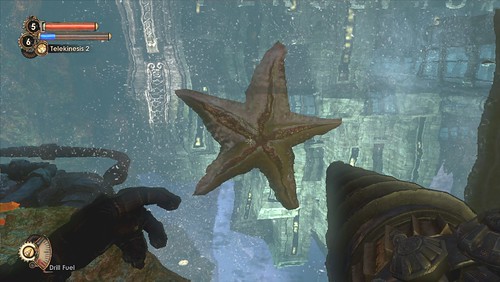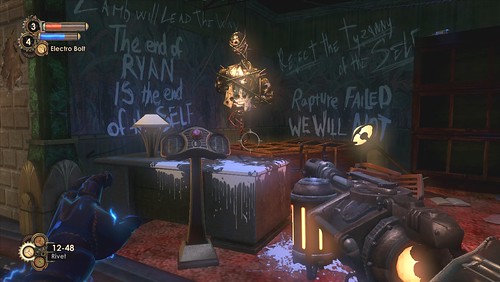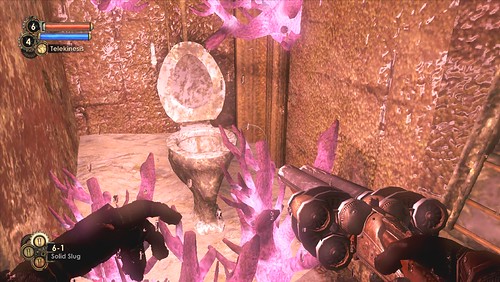TOM FRANCIS
REGRETS THIS ALREADY
Hello! I'm Tom. I'm a game designer, writer, and programmer on Gunpoint, Heat Signature, and Tactical Breach Wizards. Here's some more info on all the games I've worked on, here are the videos I make on YouTube, and here are two short stories I wrote for the Machine of Death collections.
Theme
By me. Uses Adaptive Images by Matt Wilcox.
Search
Why Graham, Rich And Jaz Should Get Forged Alliance
I was about to send an e-mail to Graham, Rich and Jaz explaining why they should get Supreme Commander: Forged Alliance and play against the AI with me sometime, then I started digging out screenshots for supporting evidence, then I realised I’d put way too much effort into this and that the shots were kinda cool.
SupCom 2 is now truly brilliant, but it’s still a different game. Here’s what’s still cool about the last one.
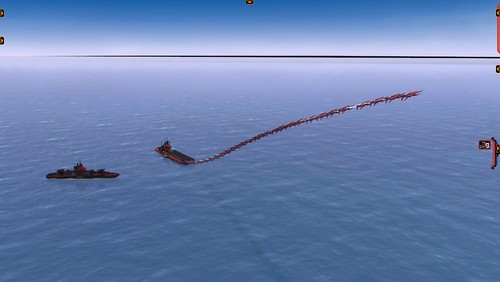 This is what it looks like when you launch fighter/bombers from an aircraft carrier.
This is what it looks like when you launch fighter/bombers from an aircraft carrier.
 This is what it looks like when you launch torpedo bombers from an aircraft-carrying flying saucer.
This is what it looks like when you launch torpedo bombers from an aircraft-carrying flying saucer.
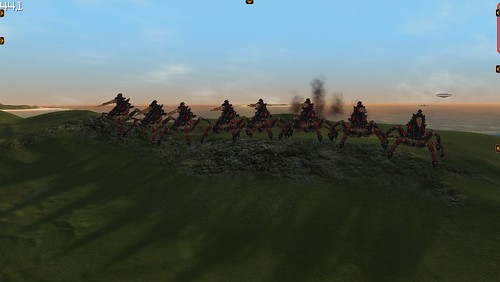 This is what a lot of Monkeylords look like.
This is what a lot of Monkeylords look like.
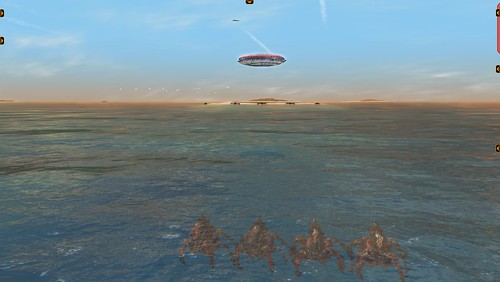 In SupCom 1, heavy shit just walks on the sea bed.
In SupCom 1, heavy shit just walks on the sea bed.
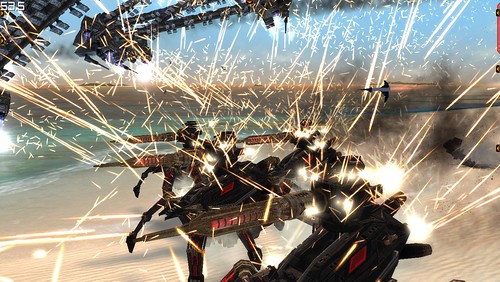 And Monkeylords don’t really care about transport fire.
And Monkeylords don’t really care about transport fire.
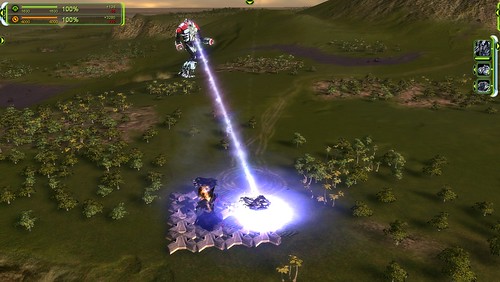 Face lasers were longer range.
Face lasers were longer range.
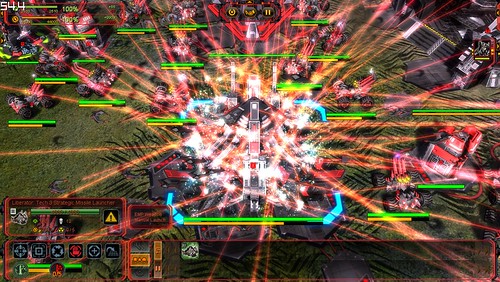 You sure could set a lot of shit to assist a thing.
You sure could set a lot of shit to assist a thing.
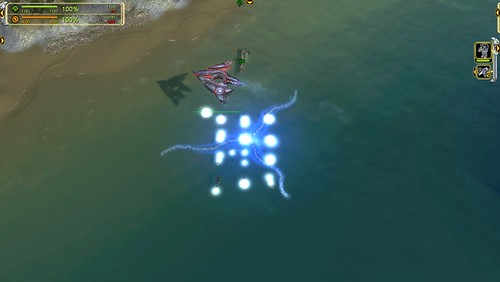 The fourth race has a bomber the size of a stadium. Those explosions? Those were battleships. That was one bomb.
The fourth race has a bomber the size of a stadium. Those explosions? Those were battleships. That was one bomb.
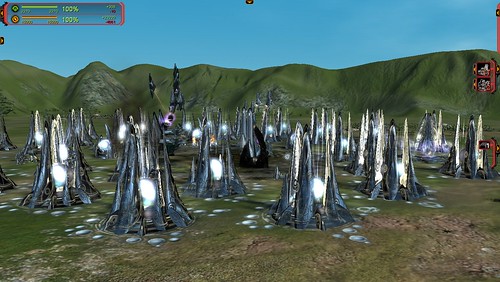 The fourth race has kind of awesome cities.
The fourth race has kind of awesome cities.
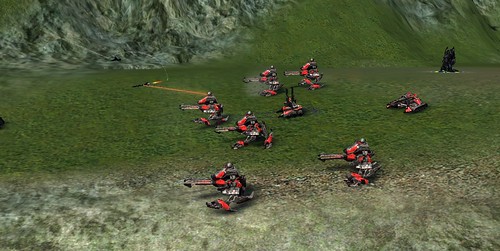 Tech 3 units are utterly badass. Here’s me discovering that Tech 3 Cybran assault bots can turn tactical missiles around mid-air.
Tech 3 units are utterly badass. Here’s me discovering that Tech 3 Cybran assault bots can turn tactical missiles around mid-air.
It’s £10 on Impulse.
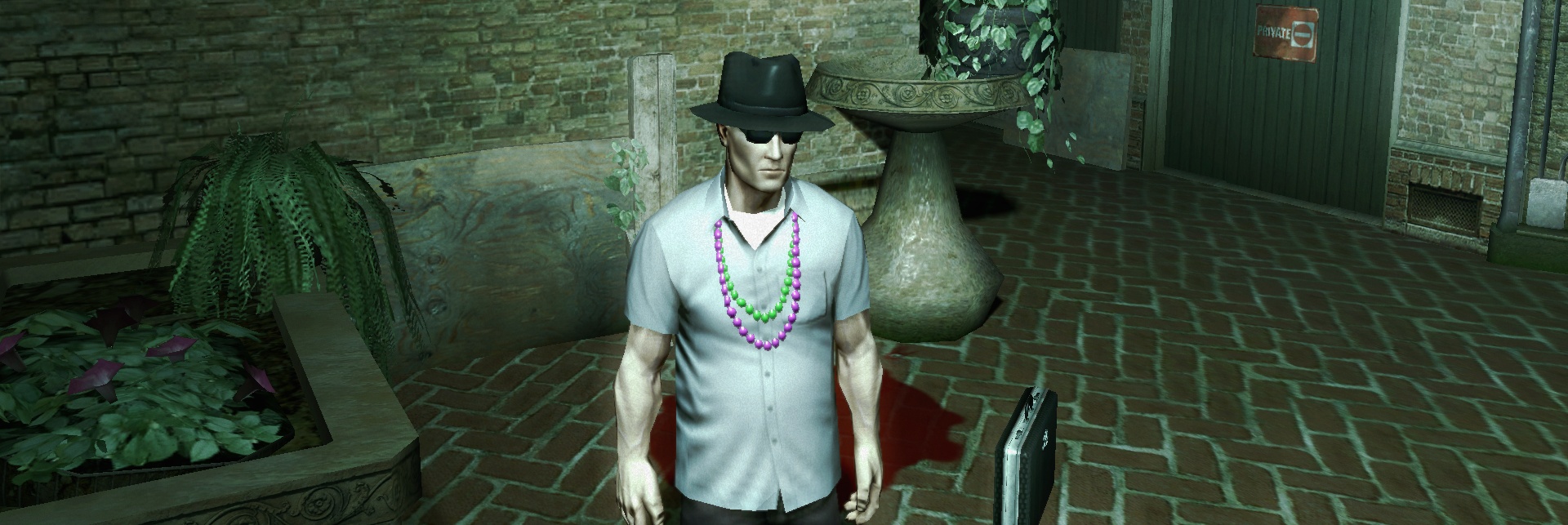
Why Are Stealth Games Cool?
While poaching some eggs, I tried to explain what’s particularly cool about stealth games. Continued
Whoa
There’s new Low, new Ted Leo and new Modest Mouse, and all of them got As from The Onion? Why was I not informed?
I don’t often think of Low when I’m asked my favourite bands, but I really should. They’re probably third or fourth, something completely ridiculous like that. Their last, The Great Destroyer, is one of the most perfect albums ever recorded, up there with Come On Feel The Illinoise and The Greatest.
Seriously, though, is there a way I can be informed of this stuff? Is there some music release-tracking site out there where I can subscribe to each of the bands I like as an RSS feed, to be notified each time they release something? It seems like something Amazon, if no-one else, ought to do.

What’s Your Fault?
We use the phrase ‘your fault’ in a way that’s different to the sum of its parts. A fault can be any kind of problem, defect, or undesirable property. ‘Your’ just means belonging to you. If you have very unsteady hands, that’s a problem of sorts, and it’s yours. But if I hand you a full mug of coffee and you spill a bit of it, if you apologised, I’d say “It’s not your fault!”
Your faults are not ‘your fault’ if you’re born with them, if they’re forced on you, if you didn’t know about them, or a whole variety of other conditions. Language forms organically and messily, and it only makes sense to talk about it in generalisations. But the most prevalent trend I can see in the types of faults that are not ‘your fault’ is this: they’re the ones you can’t reasonably change. Continued
What’s Wrong With Team Fortress 2’s Unlocks
I cooed a little about the amount of free stuff Valve have added to TF2 since release, but it’s not purely to fix or improve the classes. They’ve been experimenting with ways to leverage this free content to add an element of persistent progress and character customisation to TF2. But their experiments have been weird, and so far the resulting system doesn’t really do its job. If you’re all too familiar with why the current system needs changing, you can just skip to how I suggest changing it. Here’s what’s wrong:
You can unlock weapons for a class by earning its achievements. That means everyone plays the same class when its new weapons are released, even before they’ve earned any of them. We’re bribed to play that class at the very time when TF2’s primary problem is inevitably going to be too many people playing that class. And we’re often bribed to play it in counter-productive ways to fulfill achievement criteria, some of which are just fun little jokes.
You can ‘find’ weapons and hats randomly. On the plus side, that sometimes gives you a weapon for a class you don’t normally play, encouraging you to try it out. On the down side, well:
- A lot of what you find is duplicates of what you already have, which means that little gold message comes to be associated more with disappointment and absurdity than excitement or pleasure.
- People’s fortunes vary wildly without any correlation to skill. Some people play for hours a night, rarely get a weapon, find only dupes, and have never seen a hat in hundreds of hours of play. Others consistently get unlocks every half hour or so, and have copious hats for classes they don’t even play.
- Consequently, very rare and exclusive class items like hats don’t signify anything when you see a player wearing them. What does the mighty Camera Beard tell you about a Spy? Nothing, he just got lucky.
You can ‘craft’ items by combining lots you have to produce one you might not. Presumably meant to tackle the dupes problem with the random drops, but what we understand of the current system is totally bizarre. If you don’t have the Eyelander, you seem to need six copies of the other two Demoman weapons, plus at least eight melee weapons, to craft one without losing anything you need. In a given time period, you’re about 13.8 billion times more likely to just find an Eyelander than what you need to make one.
For a hat, you’d have to find eighty-one weapons you don’t need just to make a random one. To have more than a 3.4% chance of crafting the one you want, it takes a hundred and twelve. At the end of which, you’ve got something a new player might find in his first hour with the game.
That’s what’s wrong with the current system. I think it needs a few changes to work as an addictive RPG, as a way of customising your characters to your tastes, and as a way of showing off your skill or dedication in the way you dress. The unlocks system ought to make the repetitive violence feel like part of a larger goal, and give you a sense of progress even if you lose. Here’s how I’d do it:
Unlockable Weapons: You’d be able to browse these from the main menu to see what’s available, and select one you want to unlock. Each requires somewhere between 250 and 500 points, and once you select it all the points you score in-game, as any class, count towards that. That’s about 2-4 hours play – the Flare Gun might be 250, the Direct Hit 500. You need to be in a game with at least four non-idle players or bots for your points to count, but beyond that anti-exploit measures are probably futile.
On top of that, every five hours or so you’ll get a random weapon unlock that you don’t already have. If it’s the one you’re working towards, points earned so far transfer to what you pick next.
The idea: Every match gets you closer to something you really want, and the items you choose first make you a different player to those around you. At the same time, you can still get something unexpected for a class you don’t normally play that might encourage you to try them.
Achievements: I think they should stay – I even think the silly ones should stay. In fact, I’d get rid of the sensible ones, and just leave the ridiculous accomplishments – taunt kills, ironic deaths, corpse dancing and tortured puns (Slammy Slayvis Woundya? That’s what you’re going with?). But they no longer earn you weapons, they’re just an acknowledgement for any time you do something remarkable.
The idea: Silliness absolutely has a place in TF2, and trying to get things like taunt kill achievements just makes the game hilarious for you and your enemies. But no-one should be bribed to go for them if they don’t want to.
Feats: This is where the sensible achievements would go. They’re things that genuinely benefit your team, so you’re rewarded each time you do them: some bonus points towards your unlock (but not your in-game score) and a little pop-up: “Medic Feat! Extinguished five team-mates, +2 points”. Things like multi-kills, capturing a point alone, setting light to a cloaked Spy, killing a fully charged Medic, or making the winning capture would always be rewarded.
The idea: By letting people know they’ll be rewarded every time they do this, it both teaches and incentivises intelligent play. Achievements already do this a little, but not reliably: plenty of the actions they suggest are actually pretty dumb.
Unlockable Hats: These are handled separately, but again you choose which you want to unlock. When you do, only points and feats earned as that specific class count towards it, and the number required is in the thousands – twenty hours’ play for most, more for some special prestige items. You still earn points towards your weapon unlock at the same time.
The idea: A hat says “I play this class, I play it well and I play it a lot”. A Camera Beard says “I am amazing or crazy.”
Crafting: No crafting. I don’t think the system is entirely unsalvagable, and Chris Livingston does a good job of salvaging it in a much shorter post than mine. But ultimately any full crafting system hinges on finding dupes, which I think ruins the “ooh, I found something!” moment by diluting it with disappointment.
What’s Wrong With Just Cause?
I don’t think I wrote about it here much at the time, because it wasn’t publicly out when I was really into it, but Just Cause is one of my favourite games. Open world games don’t seem to have much trouble making a great open world – most of the big ones like Oblivion, Far Cry 2, World of Warcraft and GTA IV are all wonderful places I want to spend time in. The difference with the islands of Just Cause, which are as pretty and inviting as any of those, is that you can fling yourself at them.
I’d just finished a mission, one which left me exhausted and bleeding on a beach miles from anywhere. The next place I needed to get to was on another island entirely, and there were no boats or choppers nearby to hijack. So I called the agency to have them drop me off a motorbike.
When it came, airdropped unceremoniously in a heavy wooden crate, I ignored it and fired my grappling hook at the agency helicopter that had dropped it off. It’s one of the only things in the game you can’t hijack, but there’s no rule against hanging on to it. I reeled in and took hold of a tailfin as it thundered off – in completely the wrong direction.
It lifted me all the way over an inland mountain range, through a lashing storm, up through the cloud layer (the clouds you see in the sky can all be reached), and into a grey limbo where the island below was just a dark smudge. I let go.
Just Cause is the only game I know with a key for “I’m not falling fast enough, make me fall faster”. The heights involved are so sickeningly vast that even freefall can take minutes to drop you. So you can make yourself more streamlined, steer with your body, and choose when to open – and when to suck back in – your parachute. Mixing them to toy with your momentum vector gives you a wonderful freedom in that massive cold space, and I had so much height to work with that I was able to steer all the way back to the coast, then over it, then to the next island, and finally to my objective.
I like to come in fast: chute open, but angled downwards to drop through the air; then pull up at the very last minute and spin 180, toes whipping the shrubs. Finally I cut the chute and land in a commando roll, stand up and punch my boss in the face. This may be why he goes AWOL in the sequel.
People really didn’t take to it, not even most reviewers. EGM complained that it was ‘unrealistic’ (…), Eurogamer said the terrain was ‘uninteresting’ (!), and GameSpy claimed Saints Row 1 gave it ‘a wedgie in graphics’ (;). Other than the glitches (which seem minor on PC) and the rudimentary shooting (which would be a problem if it were a hard or large part of the game), most complaints seem to stem from the assumption that open world games are obliged to provide five to twenty times as much hand-scripted content as linear ones. Certainly some of them do, but the sense of entitlement baffles me. They don’t cost more, and they seem if anything to be more replayable rather than less.
I’m writing this because I’ve stopped playing it, and I’ve stopped playing it because a mission was pissing me off. It has some sublime ones, and the last may be the greatest final mission I’ve ever played, but quite a few fall into obvious scripting pitfalls. My excitement about the sequel due next year is getting me thinking about what precisely they need to fix, because it’s not the weird quibbles its press critics decided to mewl about.
Infinite helicopters. No good can come of infinite helicopters. If I try to concentrate on the objective, I’m constantly being shot at or rocketed and thinking “Fuck, I need to stop concentrating on the objective and do something about these infinite helicopters!” If I’m concentrating on the infinite helicopters, even perfect one-shot kills with a stash of limitless ammo doesn’t let me take them down faster than new ones arrive. Worse, it cheapens the value and significance of the most sacred bit of military hardware.
Health. When fighting infantry, a trivial task for which you rarely need healing, healthpacks spew from them like medicinal pinatas. When fighting vehicles, which rip through your health mercilessly, there’s no reprieve. In multi-stage missions getting too worn down on an early objective can leave you incapable of proceeding from the checkpoint immediately afterwards. The risible regeneration system takes nearly a minute of utter tranquility to restore a useless 10% of your total health, and will never nudge it beyond that.
Get on the gun, Rico! Hardly the only game to be guilty of these sections, but seriously, they’re so easy to avoid. It’d be great fun to grab a mounted weapon and tear through a huge army of pursuers if it were an option. When it’s forced, and the pursuers triggered by stage queues to show up in a convenient place for you to shoot, it starts to feel too much like a fairground ride.
Get the truck to the waypoint in one piece! No.
I’ll probably be back here adding to this list once I’ve got a few missions further in, but for the most part I’m having even more fun than I remember. If you’re tempted, it’s £9 on Steam and a Universal Resolution Changer lets you run it widescreen.

What’s Wrong With BioShock 2 And Why I Like It Anyway
This will sound bad, but the last thing I expected was for BioShock 2 to be worthwhile. It’s like making a Fight Club 2 – either you’re not gonna have that twist, or we’ll kinda see it coming. It wasn’t any lack of faith in the team – BioShock was very much Ken Levine’s gig, sure, but the prospect of a Jordan Thomas gig is just as enticing. But starting from a position of Least Necessary Sequel Ever, given too little time to both form a studio and significantly reinvent the game (MoonShock!), and committed to the obsequious inclusion of multiplayer – I could see fun, I could see interesting, I couldn’t see “I’m glad they made this.”
I am glad they made this. It feels like a remake, a ridiculous thing to do immediately after a great game, but some of BioShock’s systems needed it. By the last third of that game, you’d found enough interesting plasmids and tonics to develop some properly demented playstyles, ones very personal to your preferences. BioShock 2 is saying: what if that moment was just a few hours in, and you could just keep getting more bizarre, manipulative and powerful from there? Mechanically, it finishes BioShock’s clever sentence.
Plot-wise… I guess my only problem with the plot is that I missed almost all of it. As a Big Daddy might, I grasped that I was after my Little Sister, but all the other voices in my head seemed like a very long list of names all angry at me for something I didn’t understand. After hours and hours of hearing her talk about it, I still have no idea what Lamb’s plan for Eleanor was, or even what she believes in – except that it isn’t ‘the self’. I thought doing philosophy at uni would help, but I think I need a degree in listening. I can barely process basic information in a game unless it affects the level in front of me.
Both BioShocks often feel like two different game ideas, layered on top of each other but not convincingly connected. There’s the Ecosystem, this alien world of inhuman protectors stomping around with delirious gatherers, while packs of crazed aggressors try to steal them away. Then there’s the Backstory, a tawdry tale of fifties dames and johns doing the dirty on each other while high-minded well-to-dos carry on like they own the joint.
I buy into both, and I even buy into the Backstory leading to the Ecosystem, as the failed utopia finds a physical outlet for its neuroses in Adam, and creates something monstrous. What never works for me in either game is that the Backstory is still going on. Ryan set these Splicers on me? Why, don’t they just attack everything anyway? And now these Splicers are working for Lamb’s Family. They came to see the fundamental validity of her ethos in the last ten years, did they? In between screaming “Semen! On EVERYTHING!” and scampering across the ceiling with meathooks?
 Michael here feels disillusioned by objectivism, and is thinking seriously about his worldview.
Michael here feels disillusioned by objectivism, and is thinking seriously about his worldview.It makes it hard to understand what’s happened in the ten year gap. Lamb’s seized control – of what? What does control constitute in a leaking city of lunatics and corpse-sucking drones? And it leads to a structural clash: you must find your child and stop the demagogue psychologist as soon as possible! WAIT: You have not harvested or saved all the Little Sisters on this level, are you sure you wish to proceed?
WAIT: The rest of this post contains ending spoilers, are you sure you wish to proceed? Show.
What’s Happening In Kansas
For some reason your stupid country doesn’t let foreign superpowers like myself buy-in whoever we want to be State Representative in these ‘states’ of yours. But see if you can guess from their faces which one of these two candidates is evil.
Like everyone with a political agenda, I haven’t really looked into it and I know next to nothing about either candidate. But Sean Tevis’s XKCD homage makes a convincing case, and you don’t need to look into the other guy for long before you know he has to be stopped.
Tevis needs 3000 donations of $8.34 to out-finance the pink toad. No Kansas candidate has got more than 644 donors before, but he’s now on 2,894, so it’s not going to take much.
Update: He needed to get 3000 contributions in under two weeks – he got over 4,000 in two days. There’s now a short epilogue comic by way of thanks. Good job, the 1,107 Americans I apparently command.
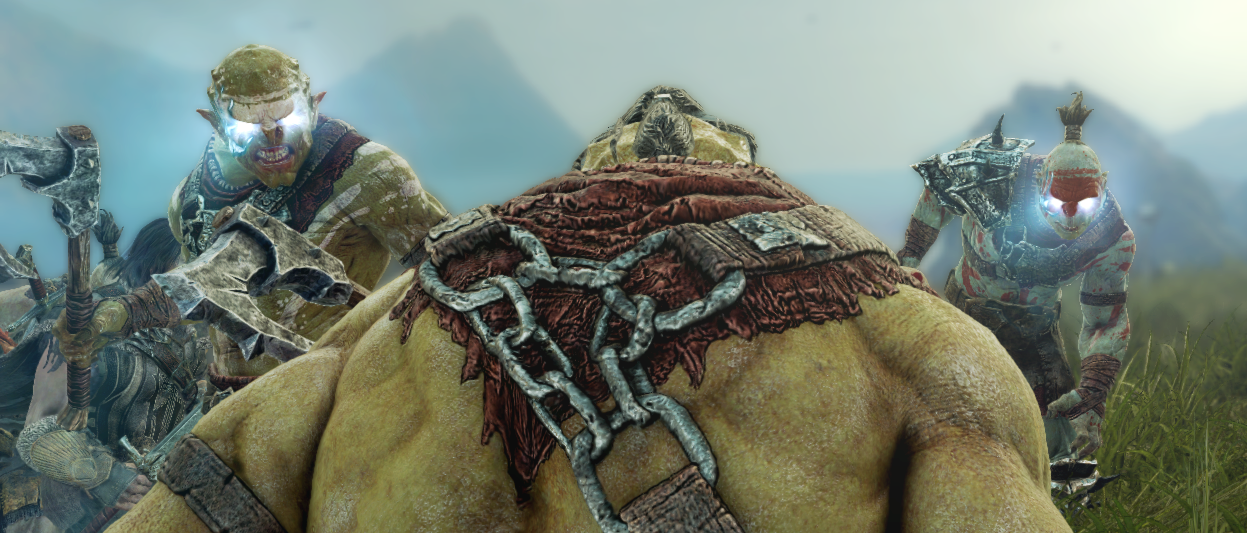
What Works And Why: Sauron’s Army
Game: Shadow of Mordor
Third-person open world action and stealth game, with Assassin’s Creed free-running and Arkham Asylum combat. You’re in Mordor, it’s full of orc-like Uruks, and for reasons that were probably explained in all the cut-scenes I skipped, you have to use them to get to the Black Dark Lord Hand – who I gather is a ruffian. Continued
What Works And Why: Prey’s Intro
The start of Prey is one of very few narrative-based game intros that really worked for me. And it comes not that long after one in the same genre that especially didn’t: Mankind Divided. So I thought it might be interesting to replay both and compare what works and what doesn’t. Not to pick on Mankind Divided – I loved the game after the stumbling start – but just because you can be more specific with praise if you have something to contrast it against.
I talked through my thoughts on both intros as I replayed them in the videos here, and I’ll summarise and add some conclusions through the magic of text. Obviously both parts of this post spoil the intros to these games. Continued

What Works And Why: Nonlinear Storytelling In Her Story
What Works And Why is a thing where I dig into the design of a game I like and try to analyse what makes it good, hopefully to learn from it but also because I love this stuff.
Spoiler-free

What Works And Why: Multiple Routes In Deus Ex
Deus Ex’s appeal is often boiled down to ‘lots of options’, but obviously that doesn’t quite cover it. Right now I’m looking to redesign the ‘sneaking inside spaceships’ part of Heat Signature, so I need more than a vague line about what’s cool about Deus Ex – I need a practical understanding of specifically why it works, and why similar games don’t. So I’m replaying Deus Ex 1 and 3, to figure out what it is I want to steal. And I think it is options, but it’s not just number. They have to fill a certain set of requirements, and this is my attempt to nail down what those are.
I’ve been mostly playing Human Revolution so far, but I’ll also use some examples for DX1 since there’s so much overlap. Continued
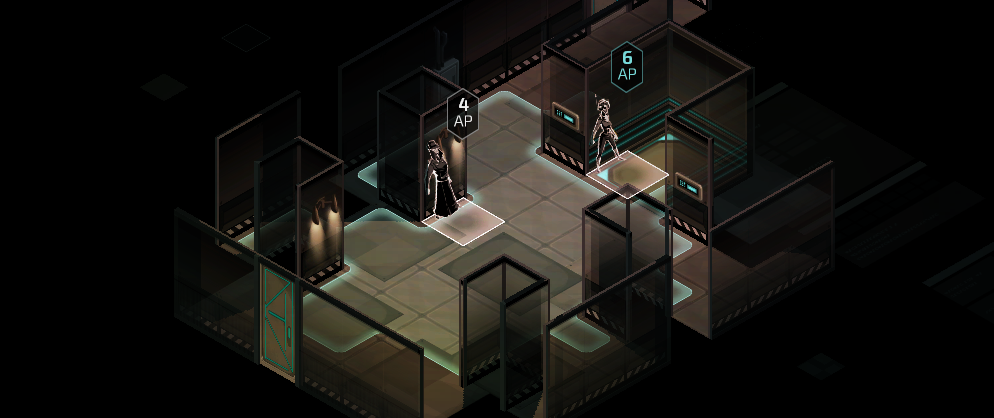
What Works And Why: Invisible Inc
What Works And Why is a thing where I dig into the design of a game I like and try to analyse what makes it good, hopefully to learn from it but also because I love this stuff.
What is it?
A turn-based stealth game with randomly generated levels and no savegames. You have two secret agents with different special abilities, and you choose from offices of varying difficulties and rewards to break into and steal money, equipment and abilities. You break in by carefully peering round corners and doors, ambushing unwitting guards with your tazers, and hacking security devices from a special vision mode.
If you want a better idea of how it plays, I recorded myself going through one mission, and talked through my thinking and how the game works.
What Works And Why: Emergence
I love Deus Ex, System Shock 2, and Dishonored 2, and the name for these games is dumb: they’re ‘immersive sims’. If you asked me what I liked about them, my answer would be a phrase almost as dumb: ’emergent gameplay!’ Continued

What To Do If Your Prototype Isn’t Fun
I got an e-mail today from a developer who’s having trouble making any of their prototypes fun. I’m posting my reply here in case it’s of help to anyone else. This developer was writing because they liked Gunpoint, so that’s why all my examples are from that.
I would suggest three things to bear in mind: Continued
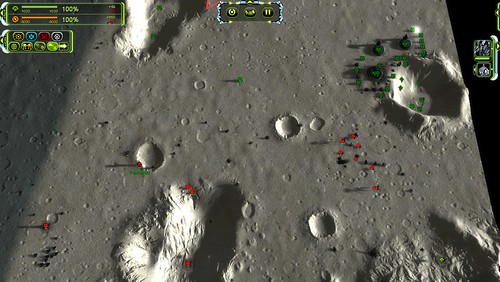



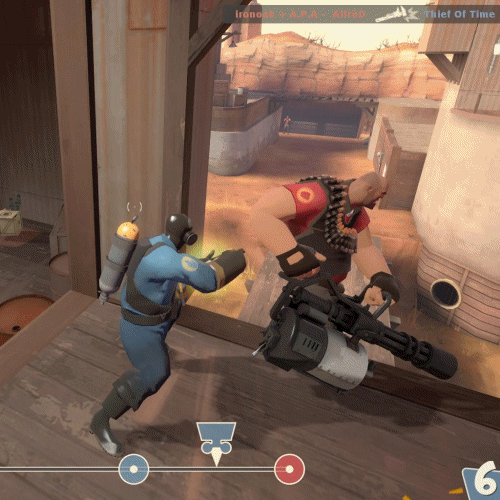
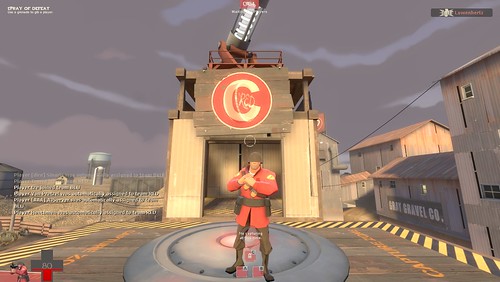
![[FBP] Dirty Squirrel is looking good!_0002](http://farm5.static.flickr.com/4052/4207772952_4a98696b4d.jpg)






